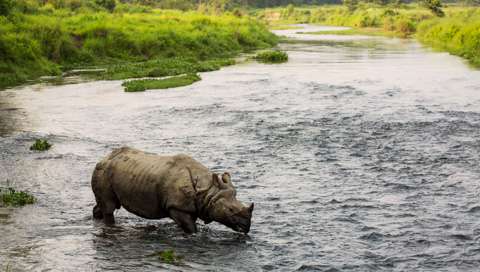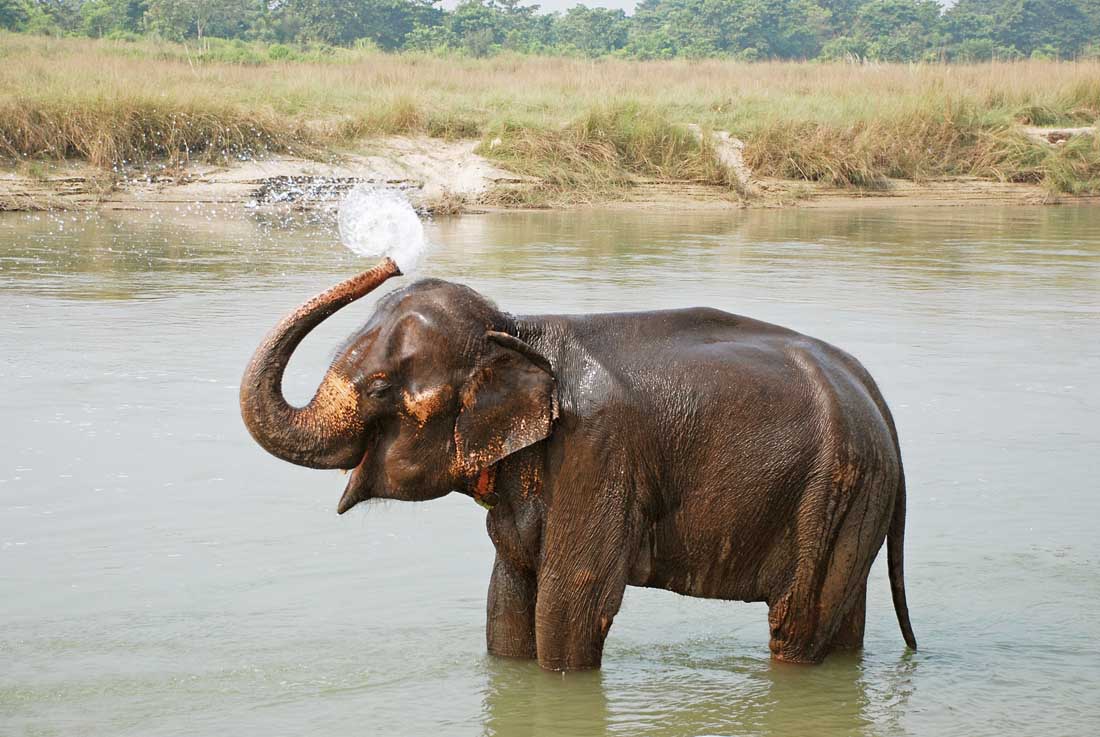Traveling in Royal Chitwan National Park
 Royal Chitwan National Park, Nepal
Royal Chitwan National Park, Nepal
The majestic elephant, the silly monkey and dozens of soaring birds call the Royal Chitwan National Park home. At the foot of the Himalayas, this UNESCO World Heritage Site is 932 square kilometers of animal and plant life preservation in Nepal.
Once the favorite hunting ground for Nepal's ruling class, the area began seeing the endangerment of all the area animals. So in 1957, Nepal passed its first conservation law to protect the rhinos and their habitat. At the end of the 1960s, however, DDT had cleared 70% of Royal Chitwan National Park jungles, thousands of people had created moved in on the land and only 95 rhinos were left. By 1977 the park was under complete protection, enlarged to the present-day size and is one of the last refuges of the Bengal tiger.
This park, also known as "the heart of the jungle," provides over 70,000 annual visitors with opportunities to get close and personal with animals they've only seen in movies. Fair warning, however, the weather is quite hot and humid for most of the year.
Neighborhoods & Around
In the north and west of the park area the Narayani-Rapti river system creates a natural border to towns and villages. To the east of Royal Chitwan National Park is the Parsa Wildlife Reserve. In the south of the area is Valmiki National Park – an area set aside for Indian Tiger preservation. In fact, the entire area of over 2,000 square kilometers is known as the Tiger Conservation Unit – including Chitwan, Parsa and Valmiki.


 Budget Your Trip is all about finding out how much everything costs so that you can travel cheaper and longer. Created by avid travelers Laurie and Bryan, our goal is to help you plan your next trip on the right budget. With average daily travel costs that are calculated from the budgets of real travelers, plus an analysis of hotel and tour prices, you can find out how much money you need to plan your next adventure. We also have plenty of travel advice, accommodation reviews, and activity suggestions.
Budget Your Trip is all about finding out how much everything costs so that you can travel cheaper and longer. Created by avid travelers Laurie and Bryan, our goal is to help you plan your next trip on the right budget. With average daily travel costs that are calculated from the budgets of real travelers, plus an analysis of hotel and tour prices, you can find out how much money you need to plan your next adventure. We also have plenty of travel advice, accommodation reviews, and activity suggestions.